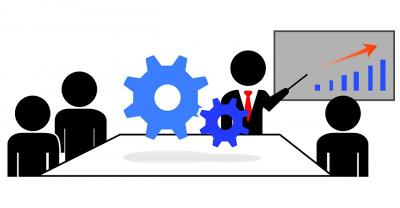
Do you know how it is to have no employee training program? It is worse than working somewhere that expects you to do something but will not be able to do it. It's the same as asking a tailor to adjust your suit without accurate measurements; it's like asking someone to complete a task without job training on how to do it.
Training is Imperative
Whether it comes in one-on-one training or an entire training session, employees always need training and refreshing sessions to know how to perform their jobs to the best of their ability and contribute to achieving corporate goals.
Online Training Programs
Do you say why use online host to train employees? Well, because that's how you save time and money, as not everyone needs to set aside time to update or train in different time slots with new jobs. They guarantee information consistency at all levels, so make sure everyone gets the same information and training. You can train at multiple locations at different times at no extra cost.
Organization can digitally track and evaluate training completion - sign-up sheets are so old! Online training provides easy access to information to employees, reducing uncertainty.
1. Familiarity
Familiarity is the most common type of employee training. This is a one-time event in which your company receives a formal welcome and becomes familiar with new services within the first week of employment. This training covers all roles and departments across the company.
Orientation training is usually developed by HR on major topics such as:
- Company mission, vision, and values
- Corporate culture
- Introduction to organizational structure and team leader
- Mandatory new rental paperwork
- Review of benefit plans
- Administrative procedures (computer login, extension, email setup, etc.)
- Key corporate policies
2. Boarding Training
Contrary to many common misconceptions, getting acquainted and onboard is different training types of employees. Although orientation training is a one-time session for everyone in the company with a checklist-style agenda, boarding training is a series of department-specific sessions that last longer. The strategy is to make new employees successful enough to stay in their new role in the shortest possible time.
Shipping training typically starts on the first day of employment and can run as needed in the first year. It is developed by departmental leaders focusing on reaching subordinate goals and connecting them to the company's overall goals. Topics, therefore, address employees' needs and provide them with easy access to the information and skills they need to perform their job and maximize employee engagement.
A complete onboard training program should focus more on the technical aspects of a job. It should also be taught how to stay engaged and productive. A great example of such content is Mind Fresh TV, a screen video website that teaches modern thinking at work. Through 5-minute online sessions, Mind Fresh videos teach everyone who works at a desk to improve body posture, reduce stress levels, and increase productivity at work. This training type is a significant educational component to include your company's employees in the onboarding training.
Efficient and successful shipping training is slowly bringing in new employees faster than leaving them to fend for themselves.
Efficiently conducting onboard training also frees up a lot of lead time as most of the questions will be available in the activity itself.
3. Training to Develop Technical Skills
No matter how much technical level your employees are at, there is always room for improvement. Technical (rigorous) skills include data analysis, content writing, social media management, coding, programming, etc. Learn how to work.
Technical skills training is a part of primary employee education because it is the fundamental way for your employees to learn how to perform their jobs technically correct. Employees need to engage in ongoing education regularly to stay up to date with the latest developments.
4. Soft Skills Development Training
How your employees work is just as important as what they know. That is why softening skills are essential for development. Soft skills are personal abilities that help employees communicate effectively with other people in the workplace, including co-workers, management, and customers. It is a highly effective way to create an influential, respectful and collaborative culture - ultimately affecting the bottom line.
Some topics to consider covering your soft skills training include:
- Commenting related skills
- Ability to present
- Ability to solve problems
- Dispute Resolution
- Leadership skills
- Emotional intelligence
- Time management
- Ethics
- Coalition
- Adaptation
5. Training of Products and Services
Product training can be either part of onboarding for newcomers or available to employees who need a refresher on the organization's products and services. Training can also educate staff about newly introduced products, services, or features to be updated continually.
6. Mandatory Training
Depending on where your company is, and the industry in which it operates, specific employee preparation and training regulations may apply.
For example, public sector employees often need professional health and safety training and refresher. Liquor licensing companies require their server employees to be alcohol-certified. And some state laws require both public and private companies to provide sexual harassment training to employees.
Governments often provide this training themselves, and since its 2017, they're usually available online in the form of slides and videos. With online access to these, you can integrate them into your online employee training website to consolidate all required training into one central hub.
7. E-learning tuition compensation
If you find a long-term solution to engage your employees, this is how to invest in your professional development apart from the online courses you offer. Employees who feel that their company has invested in them are busier and happier than their counterparts.
This engagement level doubles for your company as both a job retention strategy and a professional development tool.
Conclusion
Compensation for tuition for employee development is soon becoming one of the most popular programs. These programs sometime allocate an annual stipend for employee pursuits, advanced degrees, continuous training sessions, conferences, and more. It also motivates your employees for their personal development, and as a result, they bring these skills back into the job with them.

